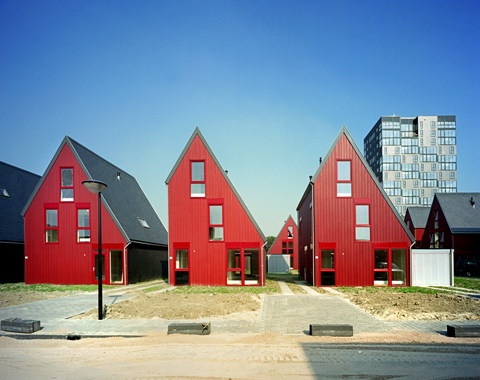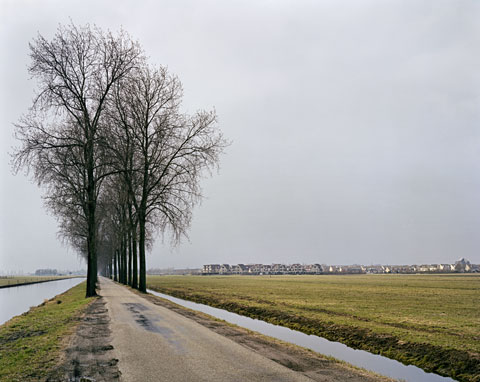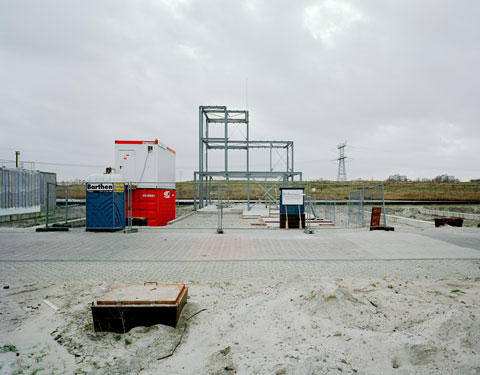Almere Buiten (4×5 film) — © Brian Rose
Amsterdam (4×5 film) — © Brian Rose
I’ve been scanning my Amsterdam on Edge negatives, pictures of the periphery of Amsterdam taken during the 15 years I lived in the Netherlands. Most of the prints I have of that work were made conventionally in the darkroom, and many were frustrating to print because of uneven processing done by the labs I used at that time in Amsterdam. There aren’t many places in New York I’d trust for c-41 processing these days either.
I still like the look of C prints for the work I do, but I don’t do any more straight darkroom prints. I scan the negatives and work them up in Photoshop, and then print them at a rental lab, or upload them to Adorama Pix, which does a serviceable job. They use Kodak Endura, which is high quality archival paper. I am essentially using their machine to print out what i’ve already done on my computer.
The image above was taken in Almere, a satellite city of Amsterdam. It’s one of the grand experiments of Dutch urban planning, a completely new city of over 100,000 people built on reclaimed land. It is also something of an architectural theme park where anything goes–at least it can seem that way. Almere, for all its density, has a suburban feel to it, and since its beginning in the 1960s it has been attractive to young families seeking a dream house away from the frictions of urban life. It is now a stronghold of Geert Wilders’ right wing anti-Muslim party.
My wife grew up there, and when I moved to the Netherlands in the early 90s her parents still lived in Almere. They have since moved to Amsterdam and they have a house on the coastal island of Texel. Places like Almere just don’t have the cultural diversity of Amsterdam, and even finding a decent restaurant remains hopeless. Once the kids grew up, they moved out.
Amstelveen (4×5 film) — © Brian Rose
Amsterdam (4×5 film) — © Brian Rose
After World War II, the Netherlands engaged in a vast rebuilding that has gone on for decades. It was a new start inspired by idealism and the belief that a better society could be consciously created and cultivated. As a result, the Netherlands has become one of the most prosperous places in the world. But in recent years, a pall has hung over this prosperity. As the world became smaller, the Dutch have found themselves increasingly a multicultural society with all its accompanying problems. The incandescent confidence that suffused Dutch politics and planning in the 90s when I arrived gave way to an erosion of confidence in the great national project, the polder model, as it was called, and a confusion about Dutch identity and culture.
That’s the context for my Amsterdam on Edge series, a project I have never adequately presented or had an opportunity to exhibit. Although I have an Amsterdam page on my website, it needs a better presentation and the inclusion of a number of new photographs–like the ones above. The Netherlands remains a conundrum for me–progressive yet deeply conservative, cosmopolitan yet overtly parochial. It is one of the best places for architecture in the world. Photographers are doing great stuff these days. I met lots of terrific people. But the cultural extremes gave me whiplash and left me stranded between countries unable to find a niche in their midst.



